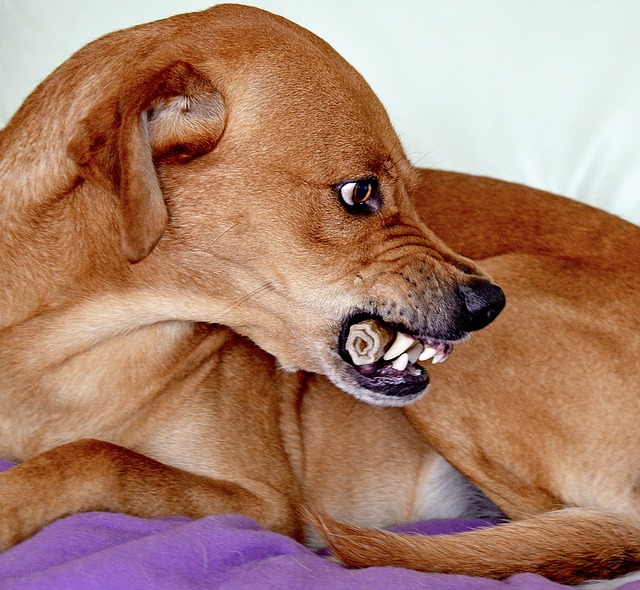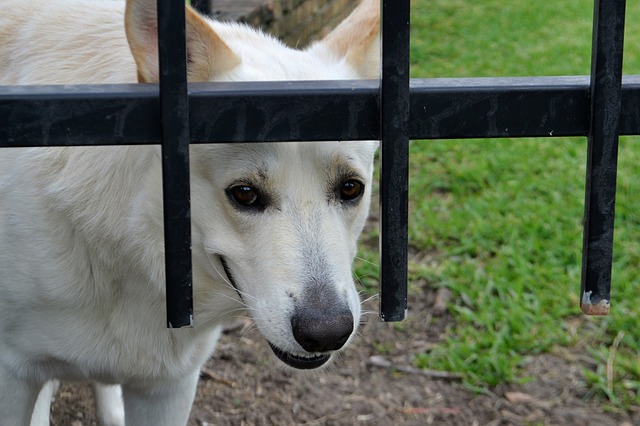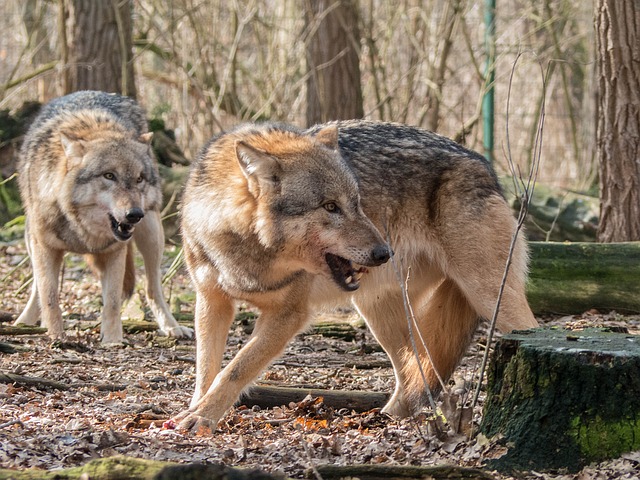Thursday, 28 February 2019
Senior Rescue Dog Diagnosed with Brain Tumor Fights for Her Life

After spending a lifetime in a puppy mill, Chloe was finally rescued. Tragedy struck again, however, when Julia Arney’s vet recommended she euthanize Chloe, her senior Maltese, due to a brain tumor. But Julia was determined to give her beloved pet a fresh start, and Chloe was ready to fight!

“Every day is a gift. We were supposed to lose her so long ago.”
In September 2017, Julia Arney’s vet recommended she euthanize her senior Maltese, Chloe. Julia was heartbroken – but she wasn’t ready to say goodbye or give up without a fight. “I wanted to exhaust every option and leave no stone unturned,” says Julia.
Adopting Chloe
A few years earlier, Julia was looking to bring a new dog into her family. She searched online and found one who caught her eye, but had “accidentally transposed the zip code, so instead of living North of Indy, where I live, the dog was in Colorado Springs!”
Despite the mixup and distance, Julia’s husband said, “go see her!” So she flew out west and got approved to adopt the pup. The foster family was out of town for a few days, so to fill the time, Julia volunteered at a local kennel. This is where she met Chloe… an older Maltese who was not the dog she had flown to Colorado to meet.
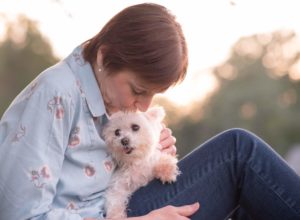
“It was an instant connection,” says Julia. “Chloe would make eye contact with me and bark if I walked by. The lady in charge of the kennel said she’d been there 11 months and had never barked. So I went to see her and that was it. She picked me.”
Julia called her husband and said, “honey, I’m in trouble.” He heard my voice and immediately told me to “bring ‘em both home.” But the airline would only let her travel with one dog, so she flew home with Peyton, the dog she’d originally gone out to adopt, and then turned right around at the airport and went back for Chloe. “I could not get back fast enough,” says Julia. “She stole my heart immediately.”
The sweet senior pup was the perfect fit for Julia’s family. She’d been rescued from a puppy mill where she’d lived for the first 9.5 years of her life, and had a lot of health issues – but it wasn’t too late for a fresh start. Having been raised in such terrible conditions, sweet, petite Chloe didn’t know what it was like to live as part of a family. “When we brought her home, there were a lot of things she didn’t know about, like sitting on someone’s lap for hours. But it sure didn’t take her long to adjust to the love! When she wants attention, she sure lets you know. She’s a snuggler now.”
Julia and her family were head-over-heels in love with Chloe – which made it all the more heartbreaking when the five-pound Maltese was diagnosed with a brain tumor.
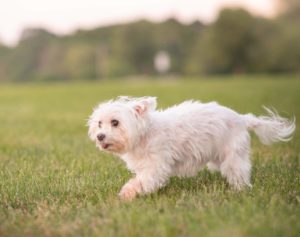
The Diagnosis – and a Fresh Plan
When Julia’s vet recommended putting Chloe to sleep due to her illness and advanced age, Julia was devastated – and determined to find a solution to keep Chloe happy and healthy as long as possible.
After some research, she found a holistic vet who said, “if she’s a fighter, we will do everything we can.” This vet recommended herbs and medicine, treatments like acupuncture, massage therapy, and lasers, and a healthier diet. “She said that one-third of success is making sure you have her on the right food.”
Julia began researching the best options for healthy dog food. “I tried a couple other brands and I wasn’t happy. They said they were fresh but they often had freezer burn, and I thought: how long was this in a warehouse if it already has freezer burn?” And Chloe can be a picky eater, so it was hard to get her to take the herbs and medicine, even in food.

Then, a breakthrough: she discovered NomNomNow. She took the nutritional information to her vet, who was on board right away. “She said ‘that’s it. That’s the food you need to have her on.’” Julia immediately switched Chloe’s diet to NomNomNow, and she took to it right away, even with the herbal holistic medicine added. To serve it, Julia says, “I warm it up lightly. It smells like food, it looks like food, it is real food.”
NomNomNow’s fresh, healthy meals – along with the vet-recommended herbal holistic medicine and treatments – have made a world of difference in Chloe’s health. Her coat is shinier, her eyes are brighter, and her health is vastly improved.

“Here we are 14 months later. I know we are on borrowed time, but every day with Chloe is a gift. I’ve had some health issues myself and been in the hospital, and she’s what got me through.”
Julia now has two dogs eating NomNomNow and says “it’s worth its weight in gold. I feel so much better about what I’m giving them. I know that it’s part of our success in treating Chloe. I try to really tell everyone – fresh food might not always be the cheapest, but consider what you’re feeding them. If your animals are your family, and you knew what was in regular dog food, you really wouldn’t feed that to family. We’re so careful about what we put in our bodies, but people don’t realize that most dog food has a lot of stuff that is horrible.”
“We have to do better for our pets. We wonder why our animals don’t live as long as they used to, but yet we feed them stuff that is just not good for them.”

Chloe’s Impact
Chloe is now 15, and her life has had a big impact – not just on Julia, but on the world. Julia was forever changed by learning about Chloe’s puppy mill experience, and has dedicated her life to education and fundraising on the topic. Since being adopted, Chloe has not only overcome health issues, but has also helped raise tens of thousands of dollars toward puppy mill awareness.
“Even after all of those years being harmed, used, neglected at the hands of humans, the way she can forgive is incredible,” says Julia. “She shows everyone she meets nothing but love. We did a fundraiser with Harley Davidson and even these big, burly guys loved her. I remember people saying things to me about having a ‘heart dog’ that changes you forever. I had always loved all my dogs… well, I get it now. I love all my dogs tremendously. But this one. She’s the one.”

Julia believes Chloe wouldn’t be here today to share her story if it weren’t for NomNomNow. “We are so appreciative for the quality of food. It’s fresh and it’s SO healthy. We are thankful to all of you. Everyone is so responsive and helpful. You walk the walk, and it shows.”
The post Senior Rescue Dog Diagnosed with Brain Tumor Fights for Her Life appeared first on iHeartDogs.com.
from iHeartDogs.com https://ift.tt/2TkyNvI https://ift.tt/2ED7dkZ
Redbarn Pet Products: Premium Treats, Food and Chews For Your Furry Friend

We love our pets, so why wouldn’t we want to feed them the highest quality products we can? Redbarn Pet Products crafts premium treats, chews and food for the four-legged friend in your life. They place an emphasis on using premium ingredients that everyone will recognize (think blueberries, flaxseed oil, chicken, and quinoa), allowing pet owners to feel confident about what they are feeding their pet. We sat down with a few members of the Redbarn Pet Products team to discuss more about the company and what sets them apart from their competitors.
What kind of goods/services does your organization offer to pets/pet owners?
Redbarn Pet Products is a manufacturer of premium treats, chews, and food for dogs and cats. With over 200 products, Redbarn has a tasty option suitable for every pet at all life stages. We are on a mission to make products that don’t just speak to consumer’s desires and trends, but help support the health and wellness of their pets. Our ultimate goal is to help pet parents make educated and nutritious decisions on behalf of their cats and dogs.
What makes your organization unique? How do you stand out in comparison to similar organizations?
Family Owned Business Since 1996:
Our co-founders, Jeff Baikie and Howie Bloxam, met on a hockey rink when they were 12-years-old. Fast forward to adulthood, and the two best friends partnered up to create Redbarn Pet Products after realizing the need for genuinely natural dog food. Natural is not just a trend at Redbarn, it’s a philosophy baked into the company’s founding.
Redbarn Owns 2 Manufacturing Facilities:
Redbarn is one of a few U.S. based treat companies to own their own manufacturing facilities. This allows Redbarn full control throughout the entire manufacturing process— sourcing ingredients, quality assurance, safety protocols, etc.

- The first facility is located in Great Bend, KS.
- The second facility is located in Paraguay and is where all of our bully products are sourced and made. Owning and operating a South American plant allows us to (1) safely source the best grass-fed bully sticks at an affordable price for pet parents; the U.S. is not a leader in grass-fed bully, but South America is and (2) because we own the facility, we operate it following U.S. standards
- Industry-leading Quality Assurance Standards: Redbarn performs physical, chemical, and microbiological tests on all our products daily, racking up more than 2,5000 tests per month. All products that come in our facilities, like raw product, are tested for quality and safety before being used in our facilities. Every single batch of final product is also inspected and tested before leaving our facilities. Finally, Redbarn utilizes an outside ISO accredited lab to ensure the accuracy of our own tests.

What makes this organization a good choice for pet owners? What benefits do they gain by engaging with your organization?
Our quality assurance standards truly set us apart from many of our competitors. When a pet parent buys Redbarn, they should know they are buying a product that was thoughtfully and safely manufactured from step one to done. As one of the only treat companies to own their own manufacturing facilities, we can ensure quality and safety every step of the way, from sourcing ingredients to the cleanliness of our facilities and testing for bacteria, for example, before sending our products out for consumption. And, of course, for people who like to support family-owned businesses, that’s something very important to our company as well!
What are the core values of your organization? How do they influence your business practices (production quality, charitable giving, etc.)?
Redbarn’s core values are: family, history, integrity, and quality.
Family:
“We’re still a family-owned company and we’ve chosen to stay that way” – Howie Bloxam. What began as two friends cooking in a kitchen has flourished into what our founders call, one big family. Howie and Jeff don’t simply make business decisions based on bottom line numbers, but what’s best for our pets, pet parents, and team members.
History:
For over 22 years now, Redbarn’s mission has remained the same: manufacture nutritious, palatable, and safe food with integrity. Jeff and Howie continually invest both time and money into quality assurance programs, hiring skilled team members, and utilizing improved processing and testing protocols so Redbarn can continue to be a leading treat manufacturer.
Integrity:
Integrity is a core value at Redbarn. Our team members choose to be honest, to have strong moral principles, and to exceed ethical standards every day. We recognize our daily decisions directly impact the health and wellness of pets. And because pets are part of our families too, there’s a personal stake in every decision we make. As our Quality Assurance Manager, Jennifer Hood, said best, “Pets can’t speak for themselves, we have a duty to speak for them.” If our own pets won’t eat the treat, we go back to the drawing board. If our QA team says a product isn’t safe enough, we continue to invest time and money into the product or we won’t sell it. But at the end of the day, we trust our Redbarn team members to make the right decisions for their pets, for our pets, and for all pets.
Quality:
Quality and safety are our top priorities throughout the entire manufacturing process. We require a Certificate of Analysis from all of our vendors verifying the correct grade and purity of material with every shipment. Our quality assurance team checks everything that comes in and out of doors in our two state-of-the-art lab facilities, totaling up to at least 2,500 tests per month. We also utilize an outside ISO accredited lab to verify our results, and in short, ensure we’re doing what we say we’re doing. We like to say we are in a committed relationship with quality assurance! With internal and external monitoring and auditing and industry leading safety protocols in place, we hope pet parents feel confident in treating their dogs and cats to Redbarn.
What’s the best way for pet owners to find out more about your organization?
To find out more about Redbarn, visit our website at Redbarn.com. If you have specific questions, our Customer Service Specialists are also available by phone Monday though Friday.
from Modern Dog magazine blogs https://ift.tt/2T7BVff https://ift.tt/2Ejzg7J
Pet Playtime: Five Ways to Incorporate Fun
Pet playtime is essential to a pet's well-being and is easy to incorporate regardless of hectic family schedules. By taking the opportunity to integrate an element of fun to everyday activities with our pets, it provides a wonderful bonding opportunity for the entire family.
The post Pet Playtime: Five Ways to Incorporate Fun appeared first on The Trupanion Blog.
from The Trupanion Blog https://ift.tt/2Udjv9k https://ift.tt/eA8V8J
Baby Gifts With A Dog Theme
When my first son was born, it came as no surprise to me that my life changed—a lot. What really caught me off guard as quite a shock was how much my identity changed, especially in the eyes of the people around me. There may very well be a sexist component to this because many women are viewed nearly exclusively as moms no matter how involved they stay in their career and the other interests in their lives. Dads are far more likely, in my experience, to continue to be viewed with a respect for all that they do beyond parenting. If other people have had a different experience in this regard, I understand that, but I am speaking about how life has come at me and most of my friends of both genders.
from The Bark https://ift.tt/2tEV213 https://ift.tt/2Tj5Lwu
Wednesday, 27 February 2019
10 Reasons to Fall in Love with a Dog Person
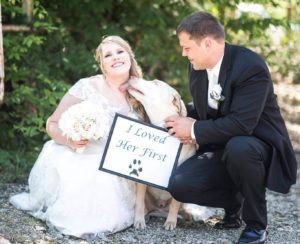
We all joke about not dating someone who our dog doesn’t like, but there is some truth in these words. When someone else enters the picture that does not understand why our dog comes first (or even a close second), it can cause problems. Falling in love with someone who is a dog lover can avoid a lot of fights, heartaches, and frustration.
#1 – Willing to Share the Bed
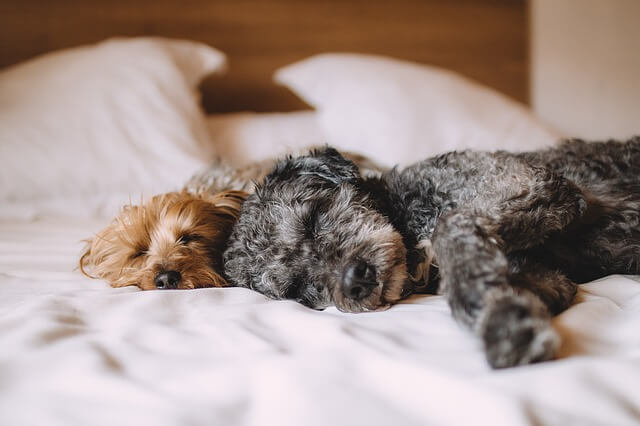
A mutual dog lover will be more likely to not mind sharing the bed with a dog (or two). While not all dog lovers allow this, you still have a better chance than with someone who does not like dogs or is, heaven forbid, allergic.
#2 – Doesn’t Mind Dog Kisses
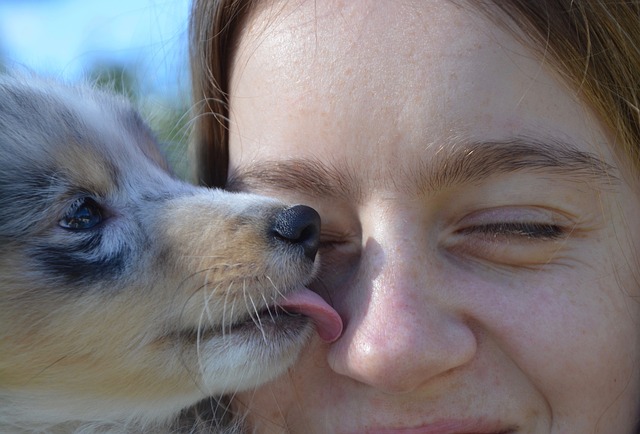
Your dog licks your face and then you want to kiss your significant other. However to a non-dog lover this might just be the grossest thing ever. Avoid this by kissing someone who kisses their own dog too.
#3 – Understands Your Dog Comes First

Breaking a date because your dog is sick or running late at the dog park? A non-dog lover may say he’s “just a dog,” or “you spend more time time with your dog than me.” A dog lover would bring you food so you didn’t have to worry about cooking and caring for your dog or would meet you at the dog park for a romantic evening watching the dogs play.
#4 – Shares Your Passion
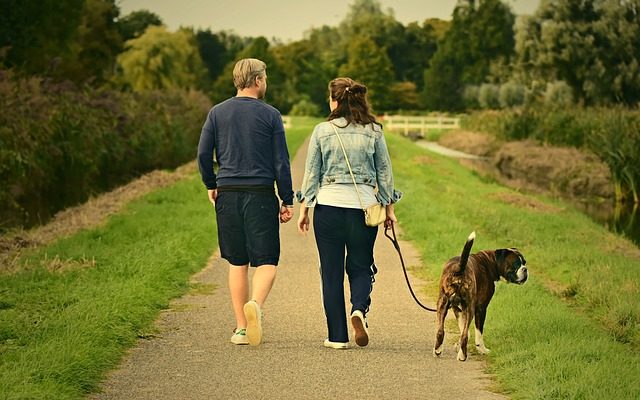
The foundation of a good relationship is sharing interests and passions. If dogs are your passion, why not find someone who loves dogs too? There are plenty of single dog owners out there and they won’t mind going to all those dog events.
#5 – Won’t Complain About Spending
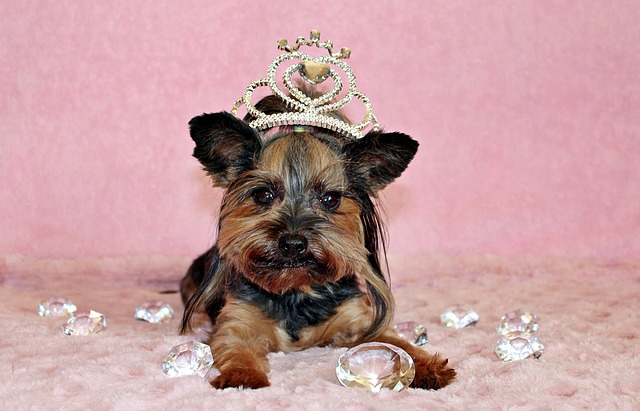
Here are words no dog lover ever wants to hear, “you spend more money on your dog than on me!” Well, yes I do, so what? Another dog lover won’t be as likely to complain about the amount you spend on your dog, or that fact that the dog has more bling that she does.
#6 – Will Let the Dog Come Too

You want to vacation somewhere the dog is welcome. Your significant other wants a “break” from the dog. Avoid this argument by being with someone that only looks at dog-friendly vacations, knowing your first love is coming too.
#7 – Won’t Mind Dog Hair
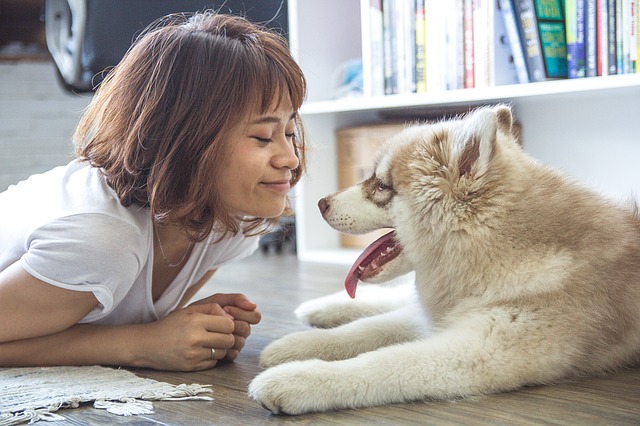
Another dog lover will be okay if you show up for every date with dog hair, in fact she will probably have dog hair on her too. She might even make art out of your dog’s fur!
#8 – Is OK That Your Phone is Full of Dog Pics

Have you ever been asked to see a picture of your new “someone” and had to scroll through 200 images of your dog to finally find the one you took when he was holding your dog? A non-dog lover may start to feel bested by the dog, whereas a fellow dog lover won’t care – their camera roll looks the same.
#9 – Buys Your Dog Gifts
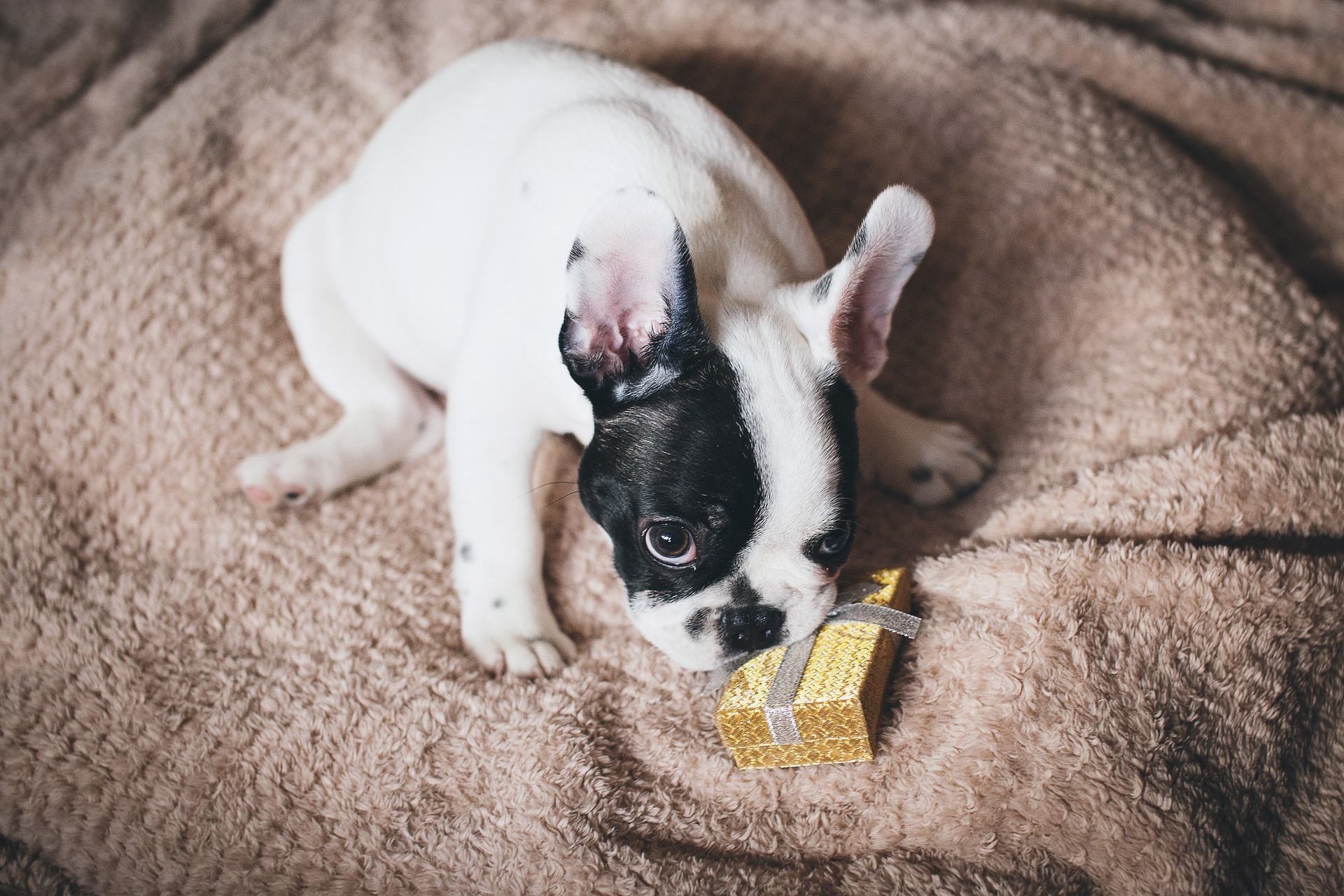
A fellow dog lover will gladly buy your dog a Christmas, birthday, “gotcha” day, a “just because” present without thinking you need your head examined. It may seem silly, but if they get on you every time you want to but your dog something, it will get old fast.
#10 – Willing to Share You
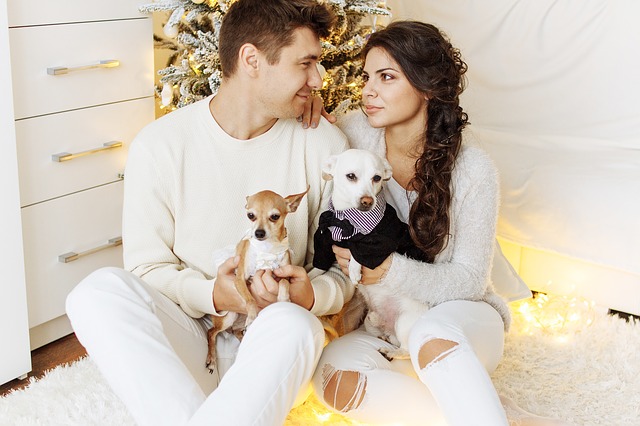
Is your dog used to cuddling with you on the couch? Or expects a 2 minute welcome scratch every time you walk in the door? A non-dog person may not be willing to share you or understand why your dog needs so much attention, but a dog lover will snuggle both of you and be happy about it.
The post 10 Reasons to Fall in Love with a Dog Person appeared first on iHeartDogs.com.
from iHeartDogs.com https://ift.tt/2EgUIKz https://ift.tt/2IQ5qxs
10 Easy Ways To Stop Your Dog From Begging
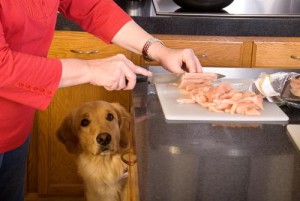
It’s a scene we’ve all been party to a million times or more. The table is set, the family is seated, and as you attempt to take that first bite of the delicious meal you’ve lovingly prepared, you become distracted by a most unwelcome site. Your beloved family dog is seated very nearby, eyeing your food longingly, perhaps with a long string of drool making its slow descent to the floor. Never does your dog sit so still or so quietly as when his gaze is focused squarely on that coveted prize of a hand out.
Begging for food is a very common complaint among dog parents. Perhaps it is a holdover from the early times of domestication when the only way to get food was to patiently wait alongside the humans at the fire. Whatever the reason, it can be highly annoying to everyone in the family and even embarrassing when you have guests. Let’s take a look at 10 ways to get your dog to stop begging.
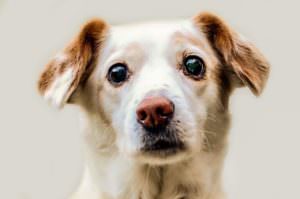
#1 – Put Him in His Place
We’re not talking about an “oh, snap,” arm circling, finger wagging kind of place putting. Going to his “place” is a legit command that you can teach your dog in a relatively short amount of time. By designating a “place” for your pup, such as his bed or crate, there is somewhere he is expected to go to on command and remain until you release him. Naturally this takes some training but with consistency and practice your dog will pick it up.
Every time you eat, instruct your dog to go to his place and enforce it until you are done. The key is to be consistent. If you do this each and every time humans eat, you may be surprised to see that after a while, your dog automatically goes to his place during meal times.
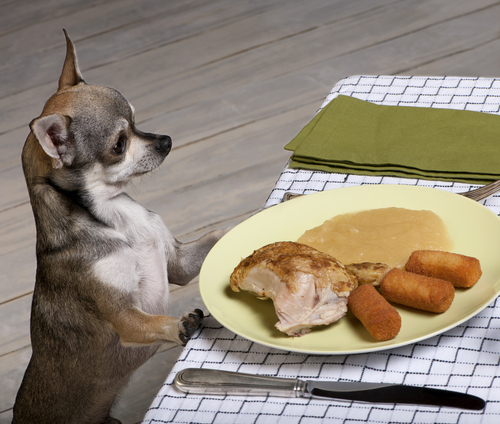
#2 – Don’t Feed from the Table
If you feed your dog from the table, even once, you can expect that nose to be ready and waiting every time after. This is a common mistake that parents make while their dogs are puppies. It’s easy to understand. Puppies are absurdly adorable and hard to resist. You think you can correct the unwanted behavior in time but unfortunately, it’s a hard habit to break. The best way to set yourself up for success is to start off right. From the very beginning, don’t feed your dog from the table.

#3 – Train Your Children
If you have kids, you know this is a tough one. If all of the adults in the house abide by the rule to not feed from the table but the little ones constantly slip her a morsel here and a taste there, your dog will become a beggar, despite the best efforts of those in the house with a fully formed frontal cortex. It can be a painful and frustrating process but you’ve got to train the children not to feed the dog anything, anytime unless specifically given permission to do so.
This is where the “place” command comes in handy. Over time, your child will also become accustomed to the dog being in her place during meals and will stop trying to sneak food to her. With time and practice, your kids and your dog will both have better meal-time manners.
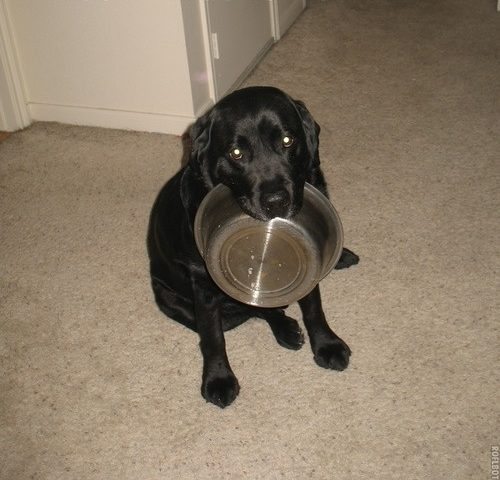
#4 – Feed Your Dog During Meal Times
To discourage begging, feed your dog at the same time that you take your meals. As plates are being set at the dinner table, fill his bowl with dinner, too. Being full and satisfied will make it less likely that he will come looking for scraps. If he finishes first, which he will, instruct him to go to his place, lay down, or simply let him outside for his post-dinner walk about the yard.
#5 – Give Your Dog a Distraction
Meal times offer a great opportunity to offer your dog toys stuffed with treats, a special bone, or a doggie toothbrush. Instead of mealtime being something she longs to participate in, it can be a special time of day for her to do something she doesn’t get to do any other time. The trick here is to onlygive her the special distraction during meals. If she gets it any old time, it won’t be nearly as appealing and she will be lured to the table to resume her bad begging behavior.
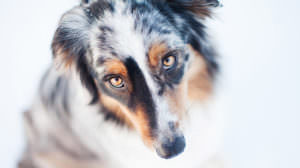
#6 – Ignore Your Dog Completely
When you dog is begging, any attention you give him can be reinforcement for the unwanted behavior. Even when you are clearly displeased with him and resort to scolding or yelling, your dog may see that as increasing his chances of getting what he wants. It is much better to completely ignore your dog than to raise your voice. Pretend your dog is not there and eventually, if you are very patient, your dog will get the message and move along. Repeat this at every meal, consistently.
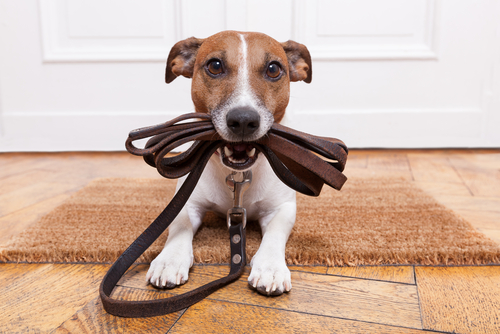
#7 – Tether Your Dog Away from the Table
Using a leash and a fixed object, tether your dog away from the table. This can be a bit bothersome in the beginning as your dog may whine and bark. I know, this is a whole new set of problems to correct. Eventually you may be able to remove the leash with the goal being for your dog to keep his distance without the leash.

#8 – Pre-Meal Playtime or Exercise
Plan to have a vigorous play session or brisk walk before meal times. Throw the ball for 15 minutes of fetch, get down on the floor and play a game of tug, or hit the neighborhood streets for a fast-paced walk around the block. This will tire out your pup and encourage her to sleep soundly while the family enjoys dinner.

#9 – Make Sure Guests Know the Rules
You and your dog may have worked super hard to stop begging. So don’t let all of that effort vanish with a hand out from a well-intentioned but uninformed guest. Politely explain that you’ve been struggling with begging behavior. Let them know you’re finally seeing a change, you’d appreciate your guest not feeding your dog anything.

#10 – Don’t Let Your Dog Be the Clean Up Crew
This one is especially difficult to bear for those with young kids who constantly drop food around the table. It’s so much easier to let your furry friend clean up the fallout. It’s so much work to sweep or wipe it up yourself. However, tasting all that yummy food around the table encourages your dog to seek food there again and again. If you don’t want begging, it’s best to bust out the broom.
Dog begging is something that all dog parents contend with at some point. With patient practice, your dog can become the well-mannered pup of your mealtime dreams. Remember, consistency is key!
The post 10 Easy Ways To Stop Your Dog From Begging appeared first on iHeartDogs.com.
from iHeartDogs.com https://ift.tt/2IGXKxm https://ift.tt/2Tg94EL
Veteran’s Service Dog Attacked By Groomer – Tail Amputated
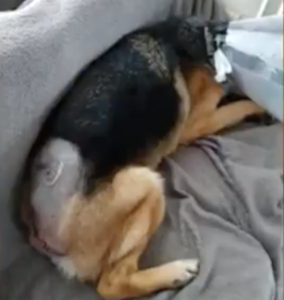
My nightmare! And I know I’m not alone. I love getting my pups groomed. Shiny, brushed-out coats. The sweet smell of perfume…until they jump into the creek. Ugh! But I always worry when I drop them off at the groomer. Somewhere, in the back of my mind, I worry. Will the groomer be nice? Do they really love dogs like I do or is it just a job to pay bills? What if Sandy, my sassy little girl, doesn’t cooperate while they’re bathing her? Will they be sweet? Or mean? Maybe even hurtful.
Brevard County Sheriff Wayne Ivey stated that the Florida groomer was arrested after he attacked a veteran Rick McGuire’s 8-year old German Shepherd service dog. The attack was so vicious that the dog’s tail needed to be amputated. The groomer, James Corell Suthann, 37, of Satellite Beach, was charged Monday with one felony count of animal cruelty.
Check Out the Brevard County Sheriff’s Office Response. Love this!!
The attack occurred when TT, a veteran’s service dog, would not be still during grooming. Suthann became angry and can be seen abusing the dog. Surveillance video shows Suthann cinch the dog’s head down so tightly, she could not move. The service dog was obviously in pain. Then Suthann grabbed the dog’s tail, lifting the dog off the ground and twisting it a full 360 degrees. The damaged caused was too extensive, and the tail could not be reattached. It was later amputated.
TT was also struck in the head with a hose nozzle, according to the sheriff’s office.
Click Here to See the Full News Report
According to Sheriff Ivey, “The video is so graphic that I will not post it on Facebook, but trust me when I tell you that it is one of the most difficult things I have ever had to watch in my 39 years of law enforcement because of the horrific and cruel way the pet was treated.”
Brevard County Sheriff Wayne Ivey and Satellite Beach police Chief Jeff Pearson personally escorted James Cordell Doughy Suthann to jail following his arrest on Monday.
TT is recovering from emergency surgery to remove the injured tail said her devastated loving veteran papa who suffers from PTSD.
H/T: NBC WESH2
The post Veteran’s Service Dog Attacked By Groomer – Tail Amputated appeared first on iHeartDogs.com.
from iHeartDogs.com https://ift.tt/2Tr0BPf https://ift.tt/2Xt9CpS
Your Dog's Personality Can Change Over Time
Like humans, dogs’ personalities likely change over time, according to new research.
When dog owners spend extra time scratching their dogs’ bellies, take their dogs out for long walks and games of fetch, or even when they feel constant frustration over their dogs’ naughty chewing habits, they are gradually shaping their pets’ personalities. Dogs, like people, have moods and personality traits that shape how they react in certain situations.
“When humans go through big changes in life, their personality traits can change. We found that this also happens with dogs—and to a surprisingly large degree,” says lead author William Chopik, professor of psychology at Michigan State University and lead author of the study, which appears in the Journal of Research in Personality.
from The Bark https://ift.tt/2BUUaK1 https://ift.tt/2UaBHjU
Tuesday, 26 February 2019
Why Does Your Dog Eat Tissues?
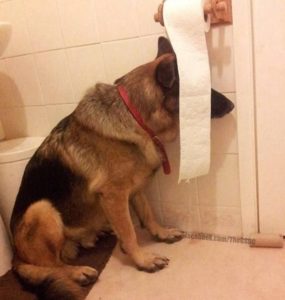
Is your dog constantly performing an at-home dumpster dive for some less than appetizing snacks? Lest you think you have the weirdest dog around, fear not, for you are not alone. Eating tissues and all sorts of other non-food items is a fairly common condition called pica. Let’s look at why your dog does this and how you can curb this distasteful appetite.
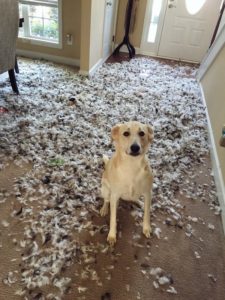
4 Possible Reasons Your Dog Eats Tissues
1. It’s Just Plain Fun
If your puppy is eating tissues or anything else she can wrap her muzzle around, it’s likely that she is simply satisfying her curiosity. Just like their human counterparts, juvenile canines learn about the world through their mouths. Biting, shredding, pawing, and eating tissues is funand comes with the bonus of teaching her new information about this place called home.
Puppies aren’t the only ones who like to party, though! Adult dogs gotta get their kicks and when bored or feeling anxious in your absence, they will find something to pass the time. Tissues and toilet paper are readily available and may even activate your dog’s ancestral hunting instinct. Expert contributor to the Canine Corner blog on Psychology Today, Stanley Coren made an interesting observationabout the behavior. He said that when dogs put tissue in their mouth it feels like feathers or fur and, therefore, activates the dog’s innate urge to rip, tear, and even eat the material.

2. It Smells Like You
Let’s face it, dogs do things that are pretty gross to us humans. Digging in the trash to eat tissues that are covered with your snot is pretty high up there on the gross continuum. Why do they enjoy this stomach-turning snack? It might be because they love you. They love you so muchthat they literally want to eat you up.
Your bodily fluids smell like you and not just the obvious armpits after a long workout variety. The part of a dog’s brain that is dedicated to deciphering olfactory information is proportionally 40 times bigger than the comparable area in a human brain. Using a comparison we can all see clearly, former director of the Sensory Research Institute at Florida State University James Walker said, “If you make the analogy to vision, what you and I can see at a third of a mile, a dog could see more than 3,000 miles away and still see as well.”
A dog’s sense of smell is insanely keen. They smell you in your used tissues, dirty underwear, and socks and because of this, they often consume them in a statement of ultimate rapture.
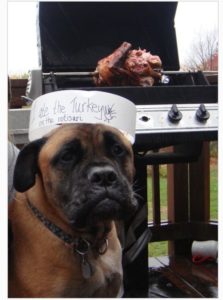
3. The Diet is Out of Whack
It’s commonly thought that pica is connected to a gap in nutrition that the dog is attempting to fill and the scientific community agrees. A case study published in 2017 states that this habit of eating non-food material is often caused by a mineral deficiency.
There are a staggering number of options available when it comes to dog food and it’s hard to know if you are making the best choice. If your dog seems to always be on the hunt for more, it could be that his diet is lacking in some key vitamins and minerals. Strange as it seems, rocks, dirt, paper products, wood and more are sought after in search of nutrients.

4. An Underlying Medical Condition
If you’ve ruled out other causes for your dog’s abnormal eating habits, it is possible that there is an underlying medical condition contributing to the problem. Conditions like diabetes, thyroid disease, internal parasites, and hormonal imbalances are all thought to be associated with pica.
If you suspect this to be the case with your pet, your vet can help. Blood work, stool samples, and a physical exam can help rule out or diagnose a problem that could be the root cause of this behavior.

Should I Worry About My Dog Eating Tissues?
Strictly speaking, eating anynon-food item is less than ideal for your pup’s health but you don’t need to rush to the emergency vet with the ingestion of a single tissue. If she mostly plays with tissues rather than eating them outright, you probably have nothing to worry about. Volume and size are key to the concern factor here.
Tissues are thin, soft, and will pretty much disintegrate with enough liquid. In small amounts, your pup will probably just pass these pieces through her body. However, a more varied palette for non-food items is definitely cause for concern.
The problem is that without the ability to be broken down and digested, these foreign objects can cause a gastrointestinal blockage. That means a great deal of pain followed by surgery to remove the blockage. Paper products like tampons, pads, and even paper towels are big enough to really mess things up in your dog’s bowels.
If your dog is acting sick, doesn’t want to eat, vomits repeatedly, and just doesn’t seem herself trust your gut. Get her checked out by your vet.
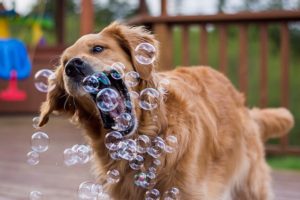
How to Stop My Dog from Eating Tissues
Naturally, if you aren’t completely sure what is causing a behavior, finding a solution proves tricky. However, the good news is that there are a few common sense steps you can take to control the behavior.
- Make sure your dog has a variety of safe toys that combat boredom. Treat puzzles are an engaging way to keep your pup occupied. These toys can also boost your dog’s IQ. And fight boredom.
- Limit your dog’s access to tissues, especially when you aren’t home. Make a habit of keeping bathroom doors closed and use trash cans with a pup-proof lid.
- Spend uninterrupted daily time with your pooch so they can soak you up in more healthful ways. Go for a walk, snuggle on the couch, or throw the ball around. A little bit of love goes a long way.
- If an imbalanced diet is to blame, consider widening the variety of food your dog eats. Eating only dry dog food is sort of like humans eating nothing but fortified breakfast cereal. CEO and Chief Editor at Web-DMV, Roger Welton saysthat dogs are omnivores and should be fed as such. Incorporating meat, bone broth, and dog-safe fruits and vegetables can help provide needed nutrients.
- Consider seeking medical help from your vet to rule out contributing illness or parasites.
We are nothing if not entirely devoted to our fine furry friends, even when they do things that make us wrinkle our noses in disgust. If your dog has a problem eating tissues, try some of the solutions we presented here. Maybe you will succeed in helping your buddy kick the habit for good!
The post Why Does Your Dog Eat Tissues? appeared first on iHeartDogs.com.
from iHeartDogs.com https://ift.tt/2NxkVci https://ift.tt/2StetE3
9 Myths About Dog Aggression
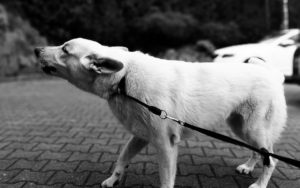
There’s no denying the fact an aggressive dog is potentially dangerous. It’s a problem that requires attention from a professional dog behaviorist, but there’s a lot more to canine aggression than most people realize. Aggression is one of the most common behavioral issues seen in dogs, and it’s one of the top reasons why dogs are euthanized and surrendered to shelters. Coincidentally, it’s also one of the most misunderstood topics in the dog world. We’re here to clear the air and dispel these common myths about dog aggression.
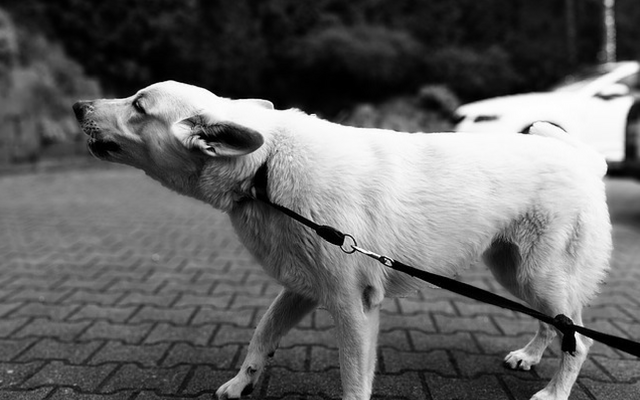
1. A “good” dog is a dog that’s never aggressive.
Similar to a tail wag or shake off, aggressive behavior is a completely normal form of canine communication. Your dog can’t come out and tell you when they’re scared, frustrated, or angry, and lashing out is their desperate attempt to make you understand. Growling, barking, snapping, and even biting are all typical ways in which dogs settle conflicts. Even “good dogs” that excel in obedience class and love spending time with people have been known to occasionally resort to aggression. PetCoach explains it well by saying,
“Expecting your dog to never do any of these things [showing aggression], no matter what happens, is a bit like expecting a person to go through life without ever having a single disagreement or argument with someone else–not very realistic in either case!”
2. Aggression happens out of the blue.
When people say a dog attacked them “out of nowhere,” all they’re really saying is they weren’t paying attention to the dog’s body language. Dogs almost never attack without warning. (The one exception is if the dog has a mental condition that impairs cognitive function.) A dog’s aggressive behavior is always in response to a trigger, and once you know what that trigger is, you can learn to expect their reaction. Contrary to popular belief, dogs are quite good at communicating their discomfort in non-aggressive ways. The issue is, humans are’t good at reading those signals before the situation escalates.
Before a dog attacks, their body language reflects what they’re thinking. Yawning, licking their lips, and refusing to look directly at someone are all signs of a stressed out dog. They take on a “frozen” posture where their body is rigid and their eyes are wide and unblinking. The signs might be subtle to the human eye, but when you know what to look for, aggression is one of the most predictable dog behaviors there is.
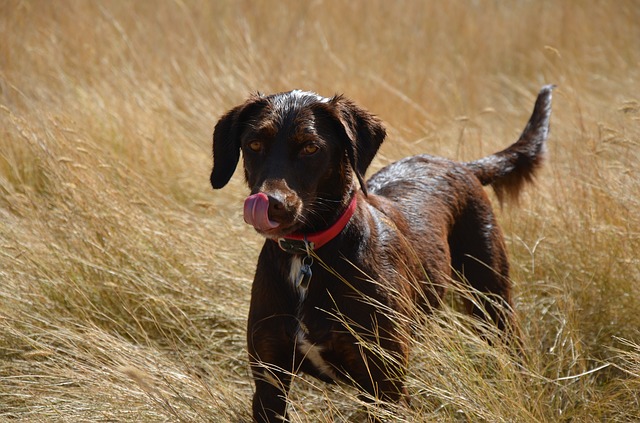
3. An aggressive dog is always an aggressive dog.
Many people think that once a dog shows signs of aggressive behavior, they’re no longer safe to be around. This kind of assumption is what lands countless healthy, friendly dogs in shelters and on euthanasia lists. A dog might growl at a groomer who comes at them with nail clippers, but that kind of fear aggression doesn’t usually translate into other parts of the dog’s life.
In this instance, context is key. Once the trigger is removed (in this case the trigger is the groomer brandishing nail clippers), most dogs will go back to being their normal, friendly selves. They’re aggressive around nail clippers because they’ve developed a negative association with having their nails trimmed, but they have no problem with interacting with people on a normal basis. Their aggression doesn’t define them, and they don’t deserve to be given up because of the misunderstanding that is does.
4. All aggression is the same.
Aggression in dogs is generally understood as a set of behaviors meant to threaten or harm another animal or person. It usually starts with a warning, like growling or snapping, and escalates into a dangerous physical confrontation. The physical actions might be the same from one dog to the next, but that doesn’t mean all dog aggression is the same.
There are actually several different kinds of canine aggression including frustration-elicited aggression, fear aggression, territorial aggression, predatory aggression, defensive aggression, and pain aggression. To determine what kind of aggression a dog is displaying, think about what happened immediately before the attack, what/who bore the focus of the aggression, and what seemed to stop it. The only way to help a dog work through their behavioral issues is to understand what caused it in the first place. ASPCA says,
“A beneficial scheme for understanding why your dog is aggressive is based on the function or purpose of the aggression. If you think of aggression this way, you can determine what motivates your dog to behave aggressively and identify what she hopes to gain from her behavior.”
5. Aggressive dogs are born that way.
It’s true some dogs have genetic makeups that make their personalities more assertive than others, but that rarely translates into aggression. People like to blame nature for a dog’s aggressive behavior, but the truth is, domestic dogs are not inherently aggressive toward people. Aggression is something they learn through life experiences. Some do it as a defense mechanism to keep potential threats at bay, and others resort to growling and snapping because of specific events that transpired in the past. Either way, something had to happen to make them believe lashing out is the best/only solution to a particular problem.
6. Certain breeds are more aggressive than others.
Today it’s pit bulls, and in the past, Rottweilers, Dobermans, Mastiffs, and even German Shepherds have all suffered under the scrutiny of misguided stereotypes. There have been countless scientific studies on the topic proving aggressive behavior is just as likely in “family-friendly” breeds as it is for the breeds most often banned in cities and public housing. The incorrect idea that there are aggressive dog breeds leaves countless dogs abandoned in shelters and mistreated by people who don’t understand them. If you’re still not convinced, read this study published in ScienceDirect. It says,
“These data suggest that although general characteristics of dogs and owners may be a factor at population level, it would be inappropriate to make assumptions about an individual animal’s risk of aggression to people based on characteristics such as breed.”
7. Aggression is only a problem in big dogs.
If you’ve ever had your ankles nipped by a feisty Chihuahua, you already know small dogs are just as likely to be aggressive as big dogs. Small breed dogs often have a problem called “Napoleon Syndrome.” It’s not an actual medical condition, but it’s what happens when small dogs overcompensate for their stature by lashing out with aggression.
It’s true a bite from a small dog won’t do as much damage as a bite from a big dog, but that doesn’t mean small dog aggression doesn’t matter. Too many small dog owners think it’s cute when their little dog “acts all tough.” But bites from small dogs always hurt, and there’s the chance they can become infected. Not addressing the issue of aggression in a small breed dog isn’t helping the dog, and it’s definitely not helping your ankles.
8. Dominance leads to aggression.
In the late 1900s, researchers thought they had a solid theory concerning canine dominance. They looked at how captive wolves interacted with each other and took notes on pack structure. When the study was finished, scientists made the assumption that because dogs are descended from wolves, domestic dogs must behave similarly to the wolves in the study. It became widely accepted that “dominant” dogs use force to dethrone those that threaten their status just like the captive wolves did.
The issue, however, is those scientists were wrong. It has since been proven that domestic dogs do not behave the same as captive wolves, and so-called “dominant” behavior does not lead to aggression. That mistake has since been recognized, but it’s lead to a misunderstanding about what dominance actually means when it comes to dogs. Australia Veterinary Behaviour Interest Group is working to set the record straight and says,
“It is not accurate to describe a dog as having a dominant personality. The word should only ever be used to describe a single interaction between two individuals competing for a resource such as a piece of food or a toy. One dog will usually give up the contest and leave the resource for the other. In that situation, the individual who wins is dominant.”
9. Dogs should be punished for showing aggression.
When a dog growls, lunges, or snaps, many people jump to doing what they think is the most appropriate reaction: punishment. What they actually end up doing, however, is making the problem worse. Scolding and hitting a dog that is obviously already afraid, nervous, or uncomfortable will push their emotions even further into the red. A study done in 2009 found that when hit or kicked, 43% of dogs respond with more aggression, and using any kind of confrontational training tactic usually results in an increase in aggression.
It’s important to remember that aggressive actions are a form of communication, and by growling or even biting, your dog is trying to tell you something. Dog trainers including Victoria Stilwell recommend using a combination of positive reinforcement and environmental management to help a dog overcome whatever it is that’s making them feel like aggression is the right thing to do.
The post 9 Myths About Dog Aggression appeared first on iHeartDogs.com.
from iHeartDogs.com https://ift.tt/2A5gpfH https://ift.tt/2StIW4S
20 Best Foods for a Picky Eater Rottweiler
We hear it all the time: “Why won’t my finicky rottweiler eat the expensive food I buy them?!” Dealing with a picky rottweiler can be frust...
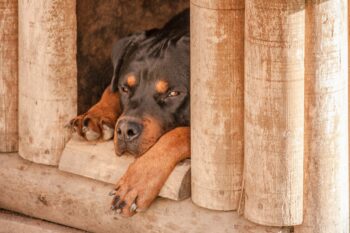
-
Sometimes, we just need a few good laughs to get us through the day. The silliest pictures are the ones that have cute dogs doing unexplain...
-
If you haven’t actually seen the 1995 animated feature film ‘Balto,’ you’ve probably at least scrolled past it on Netflix or Amazon Prime. ...
-
Some people have never known the joy of loving a dog. They don’t understand how an animal can make us laugh and cry; how they make us bette...





